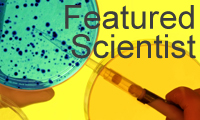Steven W. L'Hernault, PhD
 |
Professor, Department of Biology, Emory College of Arts and Sciences
Chair, Department of Biology, Emory College of Arts and Sciences
Graduate Programs
- Affiliate Member - Biochemistry, Cell and Developmental Biology
- Affiliate Member - Genetics and Molecular Biology
Education
PhD, Yale University, 1984MA, Hofstra University, 1978
BA, Hofstra University, 1976
Contact Information
Email: bioslh@emory.edu
Phone: 404-727-4234
Address:
O. Wayne Rollins Research Center, Room 2001
1510 Clifton Road NE
Atlanta, GA 30322
1940-001-1AC
Guang-Dan Zhu
Genetics and Molecular Biology
PhD, 2003
"SPE-39 is required for intracellular membrane reorganization during spermatogenesis and many other aspects of Caenorhabditis elegans development"
Samuel Lamitina
Biochemistry, Cell and Developmental Biology
PhD, 2002
"A novel domain Caenorhabditis elegans wee-1.3, a member of the MYT1 kinase family, controls M-phase entry in sperm"
Wesley Lindsey
Genetics and Molecular Biology
PhD, 2002
"spe-10 and spe-21 encode DHHC-CRD zinc finger proteins required for ER/Golgi membrane morphogenesis during Caenorhabditis elegans spermatogenesis"
Katherine Hill-Harfe
Genetics and Molecular Biology
PhD, 2000
"Analyses of spermatogenesis and the role of sperm in reproductive interactions in the nematode genus Caenorhabditis"
Priscilla Arduengo
Cell and Developmental Biology (GDBBS)
PhD, 1997
"Disruption of cytoplasmic partitioning during asymmetric cell divisions in C. elegans spermatogenesis by SPE-4, a member of the presenilin protein family"
Suzanne Cordovado
Cell and Developmental Biology (GDBBS)
PhD, 1997
"Regulation and function of the gene SPE-17, a gene required for cytoplasmic partitioning and organella postioning in C. elegans spermatogenesis"
Khaled Machaca
Cell and Developmental Biology (GDBBS)
PhD, 1996
"Segregation of ion channels and cytoplasmic organelles during Caenorhabditis elegans spermatogenesis"





